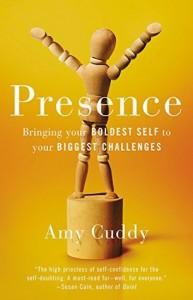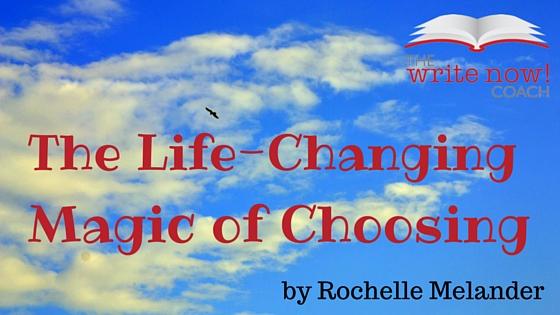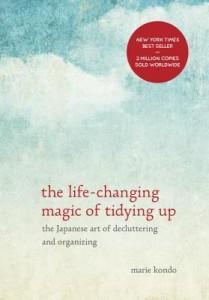The Life-Changing Magic of Choosing
January 26, 2016
Note From Rochelle
Dear Writers,
Welcome!
As a part of Dream Keepers, I often do a superhero writing class with young writers. We write about the traits of popular superheroes and  then we create our own books, teaching others How to Be a Superhero in 6 Easy Steps. After watching Amy Cuddy’s TED talk, I’m going to add an activity: practicing our superhero pose. According to Cuddy, people who practiced a Wonder Woman pose for just two minutes felt more confident and less stressed.
then we create our own books, teaching others How to Be a Superhero in 6 Easy Steps. After watching Amy Cuddy’s TED talk, I’m going to add an activity: practicing our superhero pose. According to Cuddy, people who practiced a Wonder Woman pose for just two minutes felt more confident and less stressed.
 If you’re a Wisconsin area writer and want to learn more, think about attending this Thursday night’s event with Amy Cuddy, author of the book Presence: Bringing Your Boldest Self to Your Biggest Challenges. She’ll be speaking and signing books at Boswell Book Company on Thursday, January 28, 2016. Visit the bookstore’s website for information on how to purchase tickets.
If you’re a Wisconsin area writer and want to learn more, think about attending this Thursday night’s event with Amy Cuddy, author of the book Presence: Bringing Your Boldest Self to Your Biggest Challenges. She’ll be speaking and signing books at Boswell Book Company on Thursday, January 28, 2016. Visit the bookstore’s website for information on how to purchase tickets.
Today’s tip will help you tackle the clutter on your calendar and write more!
Happy Writing!
Rochelle, the Write Now! Coach

Writers, we’ve been talking about clearing clutter—from our offices, desks, and brains so that we can write more.
But what about our schedules?
Last week I was out every single night. My days were packed with client projects. In between, I tried to write. But my to-do list sported multiple writing projects. No matter what I did, I couldn’t do it all. And I finished the week feeling like a failure.
Writers, the solution is both easy and challenging.
Do less.
Say what? Give up, skip or miss out? No way!
I know! Even the idea of letting go scares us. We’re afraid we’ll miss something essential and get left behind. (Fear of Missing Out—FOMO!)
But here’s the thing:
When you focus on the project that matters most, you increase the odds of finishing it.
So instead of juggling multiple projects at once and finishing none of them, you work through a single project from beginning to end.
Sounds great. But HOW do we decide WHAT to focus on?
 In Marie Kondo’s popular book, The Life-Changing Magic of Tidying Up, she invites readers to sort through stuff by type. For example, the person who has an overstuffed closet would dump all of her clothes in the center of the room. Then she would pick up each item and ask a single question, “Does this spark joy?” If so, the reader would keep it. If not, toss it—but not before thanking the item for its service.
In Marie Kondo’s popular book, The Life-Changing Magic of Tidying Up, she invites readers to sort through stuff by type. For example, the person who has an overstuffed closet would dump all of her clothes in the center of the room. Then she would pick up each item and ask a single question, “Does this spark joy?” If so, the reader would keep it. If not, toss it—but not before thanking the item for its service.
We’re going to do a similar process for our writing projects.
Phase One
This process is designed to support you in selecting a single writing project to focus on. But, it can also be helpful for thinking about everything we do—from our home chores to our work tasks. As you go through this process, include any parts of your life that feel overwhelming.
- List it.
On a large sheet of paper, jot down everything you do by category: writing projects, work tasks, home commitments, networking events, and anything else you do.
As you record your projects and tasks, pay attention to how you feel. Does the idea of the task spark energy or leave you feeling drained? If you have a clear sense of this:
- Use the plus symbol (+) to indicate tasks that energize you.
- Use a minus symbol (-) to note tasks that drain you.
- Question it.
Once you’ve finished making the list, take a look at each item and ask this question: Does this project spark joy? If the answer is yes, circle it.
If the answer is no, then ask a few more questions and circle the ones that get a yes:
Does this project bring other rewards?
Does this project serve a purpose?
Here’s an example. I exercise every morning at the Y. At 6 AM, the idea of leaving the house to work out does not spark joy. But, the practice of exercising brings other rewards and serves a larger purpose. I get the immediate reward of socializing with my workout buddies. The purpose: I stay fit.
- What’s left behind?
Take a look at what’s not circled and consider:
- Can you let go of this project forever? Cross it out.
- Can you let go of this project for now? Transfer it to a “maybe someday” list of projects, commitments, and tasks.
- Checking your work.
Finally, take a look at all the circled items and ask: Is there anything else I can let go of for now? Cross off these items.
Pay special attention to any circled item that has a minus sign next to it. Sometimes tasks that drain our energy end up circled because they serve a larger purpose. For example, sending out invoices after a writing project might drain us, but it serves an important purpose—it helps us get paid! If you can’t drop a task that drains you, consider:
+Can you make the task easier by creating a template?
+Can you make it more fun by doing it with a colleague?
+Can you hire someone else to do it?
+Can you exchange the task with someone else?
Phase Two
Review the yeses.
If you’re like me—bubbling over with ideas—you will no doubt finish phase one with more yeses than you can handle at one time. For those of us who suffer from the planning fallacy—we underestimate how long it will take to finish a task—it’s important to narrow down our choices even more.
Writing Projects
Take a look at the yeses in the writing category and ask:
What one writing project will I focus on in the next three months?
If you’ve read my new ebook, Write Your Book This Year: Three Shifts for Success, you know that I recommend focusing on writing one book at a time.
The Other Stuff
Review the circled items in other categories and ask:
Will any of these get in the way of me finishing my writing project? Cross off those items.
Can any of these wait until I finish my writing project? If so, cross it out.
Finally!
Once you know what project you’re writing, break it into small steps and schedule it in your calendar.
Then watch what happens to your mood when you let go of extra projects, focus on what brings you joy, and finish more.








